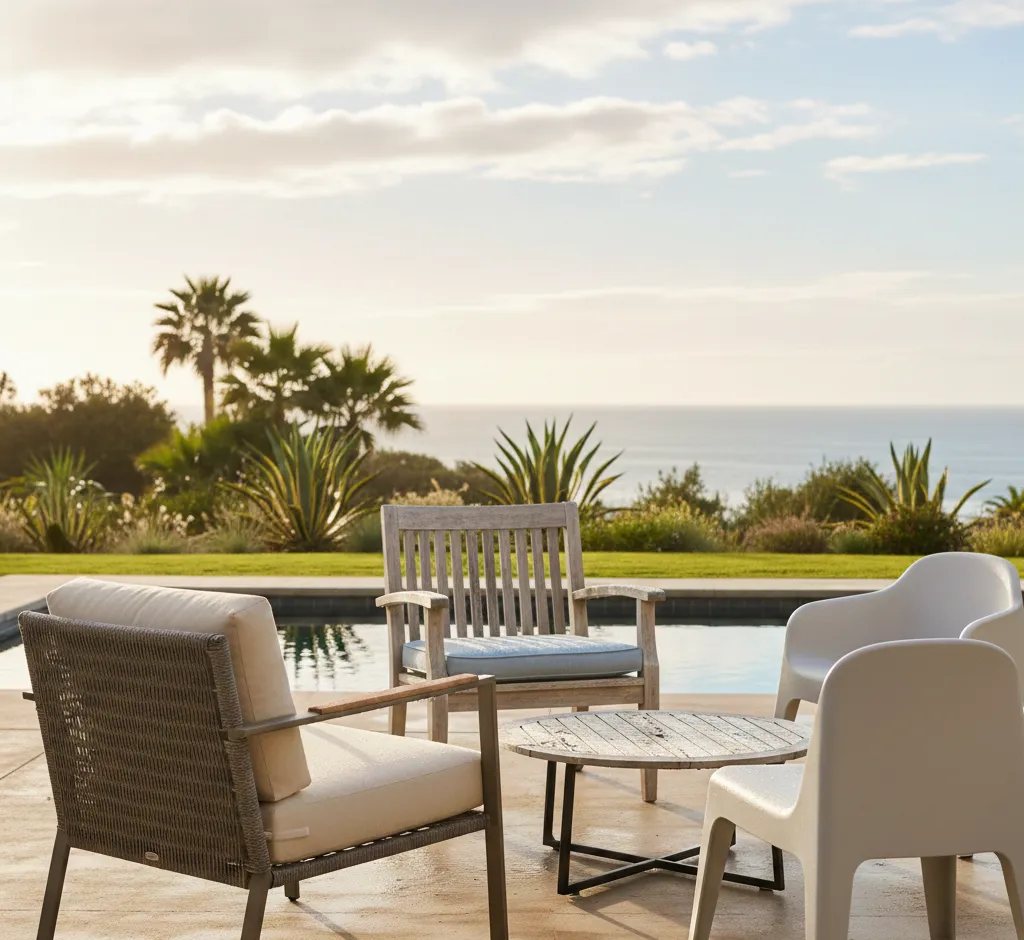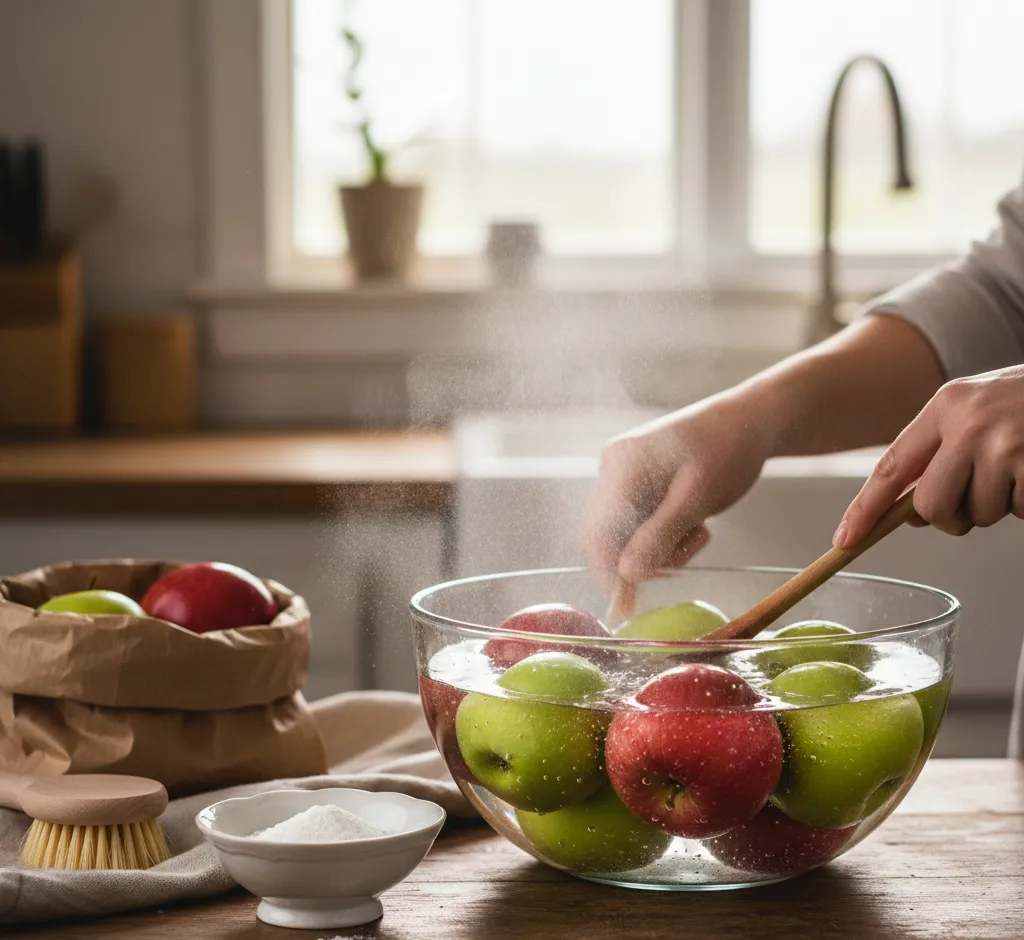The Ultimate Guide to Choosing a Chair for High-Humidity Basements
Don't let humidity destroy your furniture! Learn the best chair materials (HDPE, Teak, Aluminum) and design features to withstand moisture, mold, and rust in high-humidity basement environments.

Understanding the Basement Environment: Why Humidity Matters for Furniture
The basement is a unique and often challenging environment for furniture. Unlike the temperature-regulated, low-moisture zones upstairs, basements frequently battle with **high humidity levels**, fluctuating temperatures, and poor ventilation. This combination creates a perfect storm for material degradation, mold growth, and pest infestation—all of which can dramatically shorten the lifespan of a poorly chosen chair.
When relative humidity (RH) consistently exceeds **50% to 60%**, the air contains enough moisture to impact porous materials. Wood warps, metal rusts, fabrics mildew, and synthetic materials can sometimes even break down faster. Therefore, selecting a chair for a basement isn't just about comfort; it's a critical exercise in material science and preventative maintenance.
The Enemy Within: How Humidity Damages Common Chair Materials
To pick the right chair, you first must understand how the moisture in the air interacts with the most common furniture materials:
- Wood: Wood is **hygroscopic**, meaning it absorbs and releases moisture based on the surrounding air. In a humid basement, wood swells. If the humidity drops, it shrinks. This continuous cycle of swelling and shrinking leads to structural weaknesses like cracking, warping, joint failure, and splintering. Softwoods and engineered woods (like MDF or particleboard) are particularly vulnerable.
- Metal: The combination of high moisture and oxygen leads to **oxidation**, commonly known as rust (for iron and steel) or corrosion (for other metals). This weakens the frame and leaves unsightly stains on flooring or carpets. Even stainless steel can corrode over time in a consistently damp environment.
- Fabric and Upholstery: Upholstered chairs with natural fibers (cotton, linen, wool) or foam padding act as sponges. They trap moisture, creating a breeding ground for **mold, mildew, and bacteria**. This not only causes musty odors but also compromises air quality.
- Leather: While durable, leather is a natural skin that will absorb moisture. In a humid environment, it can become tacky, prone to mold, and eventually rot or develop a brittle texture as it dries out unevenly.
The Champion Materials: Best Choices for Basement Chairs
When shopping for a chair to withstand basement humidity, you must prioritize **non-porous** and **naturally resistant** materials. The best candidates are those typically designed for outdoor, patio, or marine use.
1. Moisture-Resistant Woods: Teak and Cedar
If you absolutely must have a wooden chair, look for high-oil-content hardwoods that naturally resist moisture and rot.
- Teak: Widely considered the gold standard for humid and wet environments. Teak has a dense grain and is packed with natural oils, making it highly resistant to warping, rotting, and pest damage. It can last for decades, often developing a beautiful, silvery patina.
- Cedar (Western Red or Spanish): Cedar contains natural preservative oils that repel moisture and insects. It is lighter than teak but still provides excellent resistance to the challenges of a damp basement.
Key Considerations for Wood:
Even the best wood needs help. Ensure the chair has a high-quality, **marine-grade sealant** or a polyurethane finish that completely encapsulates the wood. Avoid chairs finished with simple stains or waxes, as these offer minimal moisture protection.
2. High-Performance Metals: Aluminum and Stainless Steel
For metal-framed chairs, you must look for materials that are either naturally resistant to rust or have been specially treated.
- Powder-Coated Aluminum: Aluminum does not rust; it oxidizes, but the resulting aluminum oxide layer is a stable, protective coating. Chairs made from aluminum are lightweight and extremely durable against moisture. The best option is powder-coated aluminum, which adds an extra layer of impact and corrosion resistance.
- Grade 304 or 316 Stainless Steel: Standard steel will rust quickly. If you choose stainless steel, ensure it is Grade 304 (the most common and durable for indoor/outdoor use) or Grade 316 (marine-grade, which is the most resistant but expensive).
3. Synthetic and Plastic Polymers: The Low-Maintenance Kings
For sheer durability and zero maintenance in a damp environment, synthetics are often the best choice. They are non-porous and completely impervious to water damage, rust, and pest infestation.
- High-Density Polyethylene (HDPE): Often marketed as 'recycled plastic lumber' or 'polywood,' this material is frequently used for outdoor furniture. It looks like painted wood but is completely non-porous. It will not crack, splinter, rot, or support mold growth. It’s heavy, stable, and easy to clean.
- Polypropylene and PVC (Resin): These lightweight plastic resins are the simplest and most cost-effective option. They are 100% moisture-proof and perfect for casual basement seating or utility areas. Their main drawback is that they can sometimes feel less substantial than other options.
- Woven Vinyl or Textilene: Found in sling-style outdoor chairs, these mesh fabrics are synthetic, quick-drying, and allow air to circulate, preventing moisture buildup.
Avoiding the Pitfalls: Materials to Steer Clear Of
Some chair materials, while comfortable or stylish upstairs, are practically guaranteed to fail prematurely in a humid basement. These should be avoided unless the basement is fully climate-controlled (i.e., dehumidified and air-conditioned).
- Rattan, Wicker, and Bamboo: These natural woven fibers absorb moisture readily, leading to swelling, cracking, and rapid mold growth. The interwoven structure makes them nearly impossible to dry completely.
- Particleboard, MDF, and Plywood: These engineered wood products rely on glue to hold wood particles or layers together. High humidity weakens the adhesive, causing the material to swell permanently, crumble, and separate.
- Untreated or Veneered Oak/Pine: Common furniture woods like oak and pine, if not properly sealed with a marine-grade finish, will quickly absorb moisture, leading to warping and discoloration. Veneer over engineered wood is even worse.
- Natural Upholstery and Padding: Chairs with traditional cotton batting, down, or standard polyurethane foam are a perfect habitat for mildew spores. Always opt for an easy-to-clean, exposed frame.
Design and Construction Features that Enhance Durability
Beyond the primary material, the way a chair is designed and put together can dramatically affect its resistance to humidity.
1. Open Frames and Drainage
Choose chairs with an **open, slatted design** for the seat and back. This facilitates airflow and allows any moisture (from condensation or spills) to quickly drain and evaporate. Avoid solid, pan-style seats that can trap moisture against the frame or cushion.
2. Minimal Upholstery and Cushions
The ideal basement chair has **no upholstery**. If cushions are necessary for comfort, they should be:
- Removable and washable.
- Made from **fast-drying, solution-dyed acrylic** (like Sunbrella) or vinyl.
- Padded with **open-cell foam**, which allows water and air to pass through more easily than traditional closed-cell foam.
3. Rust-Resistant Hardware
Even if the frame is resistant, the fasteners (screws, bolts, staples) are often steel. Ensure all chair hardware is made from **brass, nylon, or stainless steel** (specifically, Type 304). Look for chairs where the hardware is minimally exposed or recessed to prevent corrosion.
4. Protective Feet
Basement floors (concrete or otherwise) are often the coldest part of the room and are prone to condensation or minor flooding. Chairs should have **non-porous, protective feet** (e.g., plastic glides, rubber caps, or felt pads) to prevent the frame from resting directly on a potentially wet surface.
The Proactive Approach: Environmental Control and Maintenance
No chair is entirely indestructible. The most effective strategy for basement furniture longevity is to manage the environment itself.
- Implement a Dehumidifier: This is the single most important action. A good dehumidifier should be run continuously to maintain the RH between **40% and 50%**. This not only protects the chair but also the rest of the building's structure.
- Improve Ventilation: Use exhaust fans or open basement windows (if weather permits and humidity is lower outside) to move stale, moist air out and introduce drier air. Good circulation prevents pockets of high humidity from forming.
- Regular Inspection and Cleaning: Periodically inspect the chair, especially its underside and joints. Wipe down any condensation or visible mildew with a dilute bleach or vinegar solution. For wood, reapply sealant or oil as needed, typically once per year.
Conclusion: A Synthesis of Form, Function, and Fortitude
Choosing a chair for a high-humidity basement requires shifting your mindset from interior décor to practical engineering. You are looking for a piece of furniture that is structurally sound enough to handle constant moisture fluctuation and materially resistant to rust, mold, and rot.
For the best overall performance, a chair made of **HDPE recycled plastic** or **powder-coated aluminum** with minimal or no upholstery represents the safest, most durable, and lowest-maintenance option. If aesthetics demand a natural look, invest in marine-grade **teak** with a high-quality sealant.
By prioritizing materials impervious to water and implementing basic dehumidification, you can ensure your basement seating remains comfortable, functional, and visually appealing for years, turning a challenging space into a usable extension of your home.


